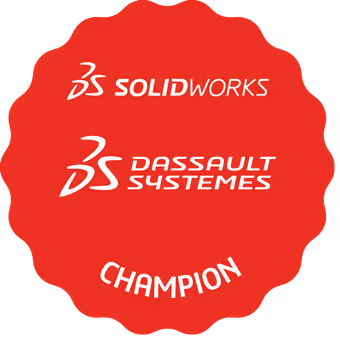Embed 3D Models – A Practical Guide for Designers, Engineers, and Product Teams
Embedding interactive 3D models into websites or internal platforms is no longer the domain of developers only. Whether you’re enabling design reviews, showcasing a product, or training service teams, embedded 3D models make complex geometry accessible—without requiring CAD software.
This guide explains how to embed 3D models, which formats are supported, and which tools are best suited for engineers, marketers, and product teams.
Why Embed 3D Models?
Embedding 3D content allows teams to:
- Improve product visualization in client-facing workflows
- Share design intent with internal stakeholders without screen-sharing
- Enable self-guided interaction in documentation or support portals
- Reduce friction in cross-functional collaboration
It’s faster, clearer, and more scalable than static screenshots or exported PDFs.
Common Methods to Embed 3D Models
1. iframe Embeds (WebGL-Based Viewers)
This is the fastest way to embed models. Platforms like Sibe.io (PDM SaaS), Sketchfab, or Autodesk Viewer let you upload a model and generate an embeddable < iframe > snippet.
- Zero coding required
- Works across browsers
- Supports secure or public sharing
2. Custom WebGL / Three.js Viewers
For full control over the interface and behavior, teams may build their own 3D viewers using Three.js, Babylon.js, or similar frameworks.
- Requires JavaScript and WebGL development
- Best for product configurators or custom UI workflows
- Higher development and maintenance effort
3. CAD Vendor-Specific Viewers
Some platforms offer browser-based viewing:
- SOLIDWORKS eDrawings: limited web support, often Windows-only
- Fusion 360: generates cloud links, but not true embeddable viewers
- Typically used internally, with constrained collaboration features
Supported 3D File Formats for Embedding
Tools That Let You Embed 3D Models
How to Embed a 3D Model Using Sibe.io
Sibe.io offers a streamlined workflow for engineering teams, with a focus on real-world collaboration, not just visualization.
Steps:
- Upload a model (e.g. STEP, STL, or native SLDPRT via the SOLIDWORKS add-in).
- Sibe converts it into a lightweight, browser-optimized format.
- Generate a secure or public link.
- Copy the generated iframe snippet into your CMS, support portal, or documentation site.
- Enable optional markup tools for internal or client feedback.
Since Sibe.io integrates directly into the SOLIDWORKS UI, you avoid the need for external exports, converters, or FTP folders.
Best Practices for 3D Embedding
To ensure performance and usability:
- Use glTF or GLB whenever possible (small size, optimized for WebGL)
- Simplify geometry before upload (remove fasteners, threads, etc.)
- Limit polycount and texture size to improve loading times
- Use camera presets to focus user attention
- Consider viewer access rights—some use cases demand private embeds
Choosing the Right Embedding Workflow
How to embed 3d models on WordPress
Final Thoughts
Embedding 3D models allows teams to move faster, communicate more clearly, and collaborate with less friction. Whether you’re demoing a part to a client or preparing internal reviews, the right embedding approach depends on file format, audience, and workflow.
For engineering-centric use cases, Sibe.io offers the cleanest solution—especially with its native SOLIDWORKS add-in, browser-based markup tools, and one-click sharing that doesn’t require IT intervention.
Book a free Demo with Ken to see Sibe in action



Certified SolidWorks Champion





.svg)